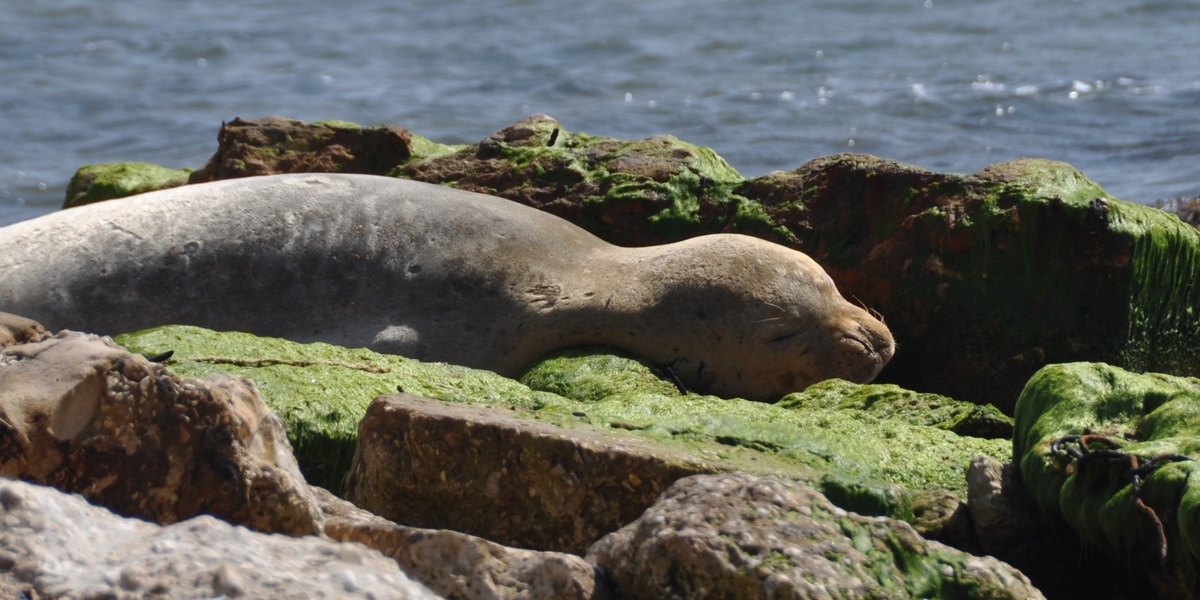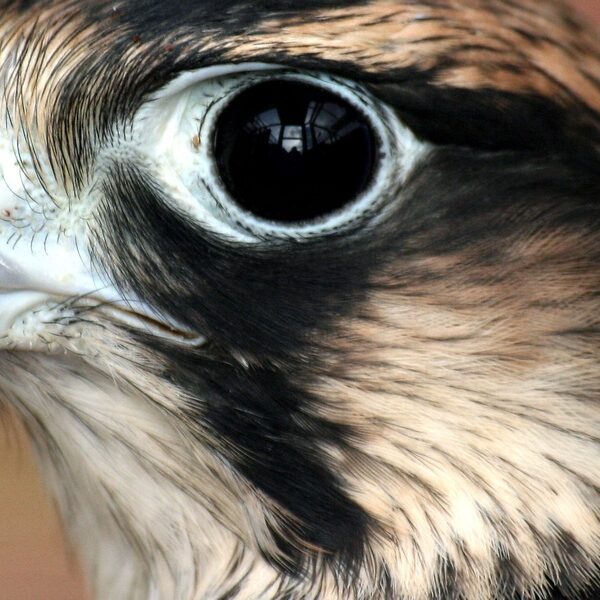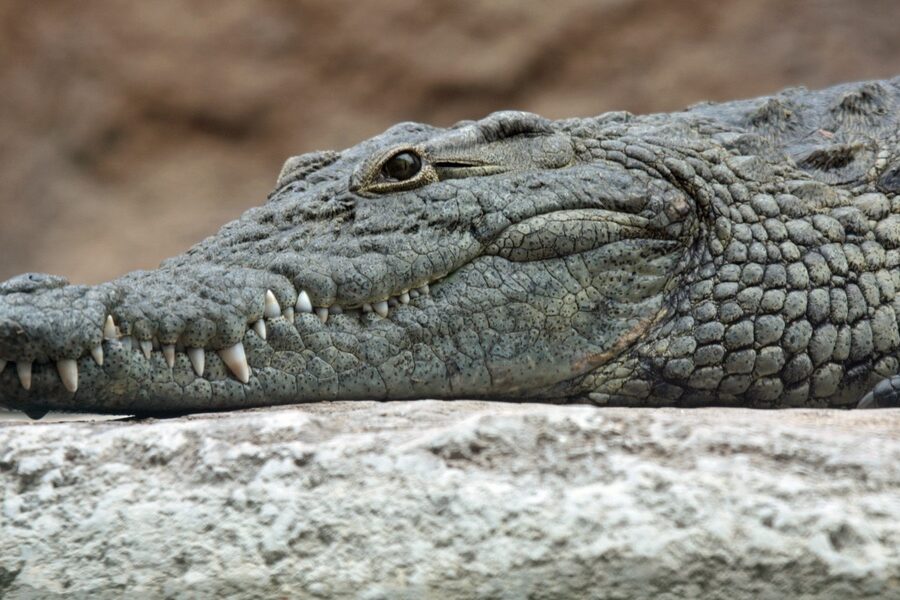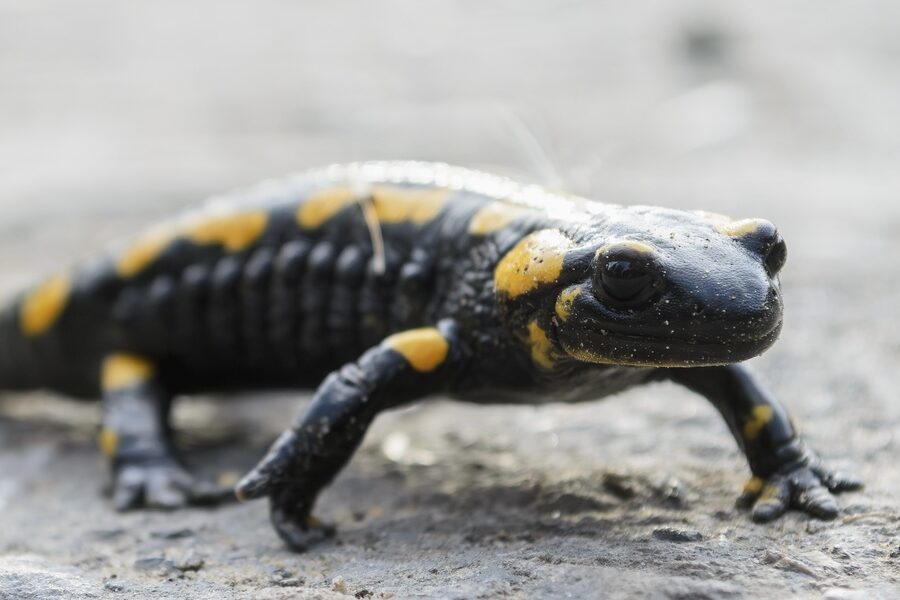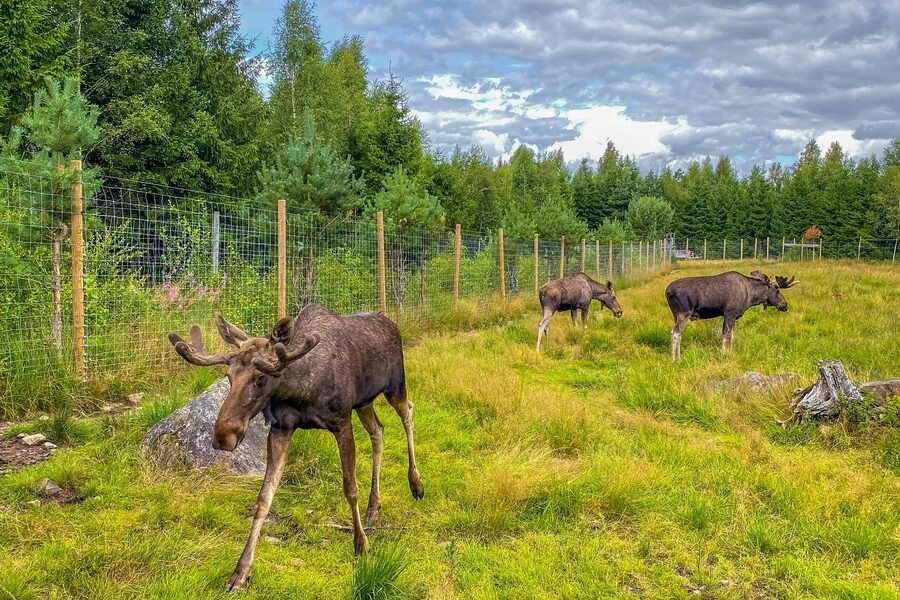Israel’s landscapes — from coastal marshes and river valleys to desert wadis and montane slopes — support a surprising variety of life, much of it under growing pressure from development, water use and pollution. Understanding which animals and plants are at risk helps prioritize conservation and informs visitors, researchers and policymakers.
There are 41 Endangered Species in Israel, ranging from Arabian Leopard to Yarkon Bream. For each species the data is organized as Scientific name,Status,Main locations so you can quickly see identification, conservation status and where they live — you’ll find below.
How is a species determined to be endangered in Israel?
Species assessments generally follow scientific criteria similar to the IUCN but are applied locally by national bodies and researchers: population size and trend, geographic range and fragmentation, and the severity of threats (habitat loss, pollution, invasive species). These assessments inform legal protection and conservation priorities.
Where can I observe or support these species in the wild?
Many listed species are highly localized or seasonal; some are only seen in protected reserves or specific waterways. Check with local nature reserves, national park authorities or conservation groups for guided visits, volunteer opportunities and up-to-date sighting information before planning a trip.
Endangered Species in Israel
| Name | Scientific name | Status | Main locations |
|---|---|---|---|
| Griffon Vulture | Gyps fulvus | LC (IUCN) ; Critically Endangered (Israel 2017) | Carmel Hai-Bar, Negev, Golan Heights |
| Arabian Leopard | Panthera pardus nimr | CR (IUCN) ; Critically Endangered (Israel 2017) | Negev Desert, Judean Desert |
| Mountain Gazelle | Gazella gazella | EN (IUCN) ; Vulnerable (Israel 2017) | Golan Heights, Galilee, Judean Mountains, Coastal Plain |
| Mediterranean Monk Seal | Monachus monachus | EN (IUCN) ; Critically Endangered (Israel 2017) | Rosh Hanikra, Northern coast caves |
| Green Turtle | Chelonia mydas | EN (IUCN) ; Endangered (Israel 2017) | Mediterranean coast, Gulf of Eilat |
| Loggerhead Sea Turtle | Caretta caretta | EN (IUCN) ; Endangered (Israel 2017) | Mediterranean coast |
| Negev Tortoise | Testudo kleinmanni | CR (IUCN) ; Critically Endangered (Israel 2017) | Western Negev sands |
| Hula Painted Frog | Latonia nigriventer | CR (IUCN) ; Critically Endangered (Israel 2017) | Hula Valley |
| Fire Salamander | Salamandra infraimmaculata | NT (IUCN) ; Endangered (Israel 2017) | Mount Carmel, Galilee, Tel Dan Nature Reserve |
| Yarkon Bream | Acanthobrama telavivensis | VU (IUCN) ; Endangered (Israel 2017) | Yarkon and other coastal rivers |
| Gilboa Iris | Iris haynei | EN (IUCN) ; Endangered (Israel 2011) | Mount Gilboa |
| Sharon Iris | Iris atropurpurea | EN (IUCN) ; Endangered (Israel 2011) | Coastal Plain (Netanya, Ashdod) |
| Lappet-faced Vulture | Torgos tracheliotos | EN (IUCN) ; Critically Endangered (Israel 2017) | Negev Desert (Arava Valley) |
| White-headed Duck | Oxyura leucocephala | EN (IUCN) ; Critically Endangered (Israel 2017) | Jezreel Valley, Hula Valley |
| Sand Cat | Felis margarita | LC (IUCN) ; Endangered (Israel 2017) | Arava Valley, Southern Negev |
| Marbled Teal | Marmaronetta angustirostris | NT (IUCN) ; Endangered (Israel 2017) | Hula Valley, Beit She’an Valley |
| Macqueen’s Bustard | Chlamydotis macqueenii | VU (IUCN) ; Endangered (Israel 2017) | Negev Desert |
| Egyptian Vulture | Neophron percnopterus | EN (IUCN) ; Critically Endangered (Israel 2017) | Golan Heights, Negev, Judean Desert |
| Lesser Kestrel | Falco naumanni | LC (IUCN) ; Endangered (Israel 2017) | Judean Plains, Alona region |
| Syrian Spadefoot Toad | Pelobates syriacus | NT (IUCN) ; Endangered (Israel 2017) | Coastal Plain |
| Jordan Tilapia | Sarotherodon galilaeus | VU (IUCN) ; Endangered (Israel 2017) | Sea of Galilee (Kinneret) |
| Damascus Loach | Oxynoemacheilus insignis | VU (IUCN) ; Endangered (Israel 2017) | Jordan River system, Sea of Galilee |
| Negev Iris | Iris mariae | EN (IUCN) ; Endangered (Israel 2011) | Western Negev |
| Persian Fallow Deer | Dama mesopotamica | EN (IUCN) ; Critically Endangered (Israel 2017) | Carmel Hai-Bar, Galilee |
| Great White Pelican | Pelecanus onocrotalus | LC (IUCN) ; Endangered (Israel 2017) | Hula Valley, Coastal wetlands |
| Barbary Falcon | Falco pelegrinoides | LC (IUCN) ; Critically Endangered (Israel 2017) | Judean Desert, Negev Highlands |
| Steppe Eagle | Aquila nipalensis | EN (IUCN) ; Endangered (Israel 2017) | Negev, Arava Valley |
| Dalmatian Pelican | Pelecanus crispus | NT (IUCN) ; Endangered (Israel 2017) | Hula Valley, Jezreel Valley |
| Bonelli’s Eagle | Aquila fasciata | LC (IUCN) ; Endangered (Israel 2017) | Judean Mountains, Negev, Galilee |
| Ferruginous Duck | Aythya nyroca | NT (IUCN) ; Endangered (Israel 2017) | Hula Valley, Coastal wetlands |
| Long-billed Curlew | Numenius americanus | NT (IUCN) ; Endangered (Israel 2017) | Eilat, Coastal wetlands |
| Sociable Lapwing | Vanellus gregarius | CR (IUCN) ; Critically Endangered (Israel 2017) | Northwestern Negev |
| European Eel | Anguilla anguilla | CR (IUCN) ; Critically Endangered (Israel 2017) | Coastal rivers |
| Striped Hyena | Hyaena hyaena | NT (IUCN) ; Endangered (Israel 2017) | Across Israel, excluding dense urban areas |
| Egyptian Mastigure | Uromastyx aegyptia | VU (IUCN) ; Endangered (Israel 2017) | Arava Valley |
| Beer Sheva Fringe-fingered Lizard | Acanthodactylus beershebensis | EN (IUCN) ; Critically Endangered (Israel 2017) | Northwestern Negev |
| Tabor Oak | Quercus ithaburensis | LC (IUCN) ; Endangered (Israel 2011) | Sharon Plain, Lower Galilee |
| Hairy Vetchling | Lathyrus hirsutus | LC (IUCN) ; Endangered (Israel 2011) | Coastal Plain, Samarian hills |
| Narrow-leaved Lupin | Lupinus angustifolius | LC (IUCN) ; Endangered (Israel 2011) | Coastal Plain, Galilee |
| Egyptian Sea-lavender | Limonium pruinosum | LC (IUCN) ; Critically Endangered (Israel 2011) | Dead Sea area, Arava Valley |
| Hula Water Lily | Nymphaea hulensis | NE (IUCN) ; Critically Endangered (Israel 2011) | Hula Valley |
Images and Descriptions
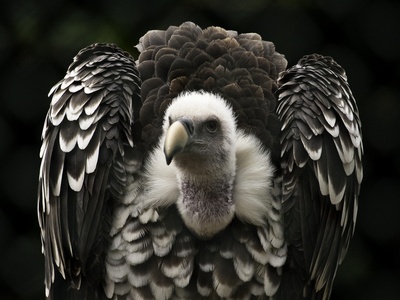
Griffon Vulture
This massive vulture is a keystone scavenger, but its population has plummeted over 90% due to poisoning from agricultural pesticides and veterinary drugs in carcasses. Reintroduction and supplementary feeding stations are crucial conservation efforts to prevent its local extinction.

Arabian Leopard
Functionally extinct in Israel, with only a handful of individuals, if any, remaining. This elusive cat suffers from habitat fragmentation, prey scarcity, and historical persecution. Conservation efforts focus on remote monitoring and protecting its vast, arid habitat.
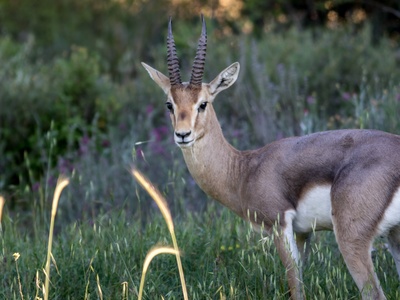
Mountain Gazelle
Israel holds the largest remaining population of this elegant gazelle, but it is threatened by habitat loss from urbanization, agriculture, and predation by feral dogs. Conservation areas and wildlife corridors are vital for connecting fragmented populations and ensuring their survival.
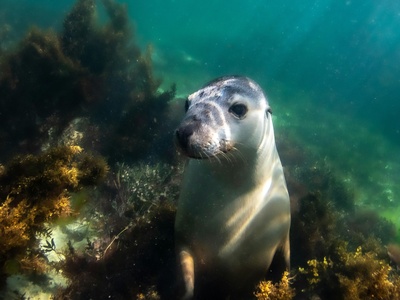
Mediterranean Monk Seal
Extremely rare in Israeli waters, this seal is one of the world’s most endangered marine mammals. Threats include marine pollution, entanglement in fishing nets, and human disturbance of its coastal cave habitats. Sightings are sporadic, highlighting its critically low numbers.
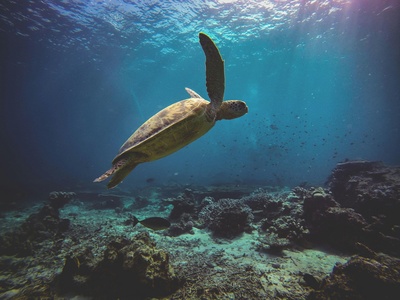
Green Turtle
Nesting sites on Israel’s Mediterranean coast are vital for this species. It is threatened by coastal development destroying nesting beaches, light pollution disorienting hatchlings, and plastic ingestion. A national rescue center treats injured turtles and promotes public awareness.
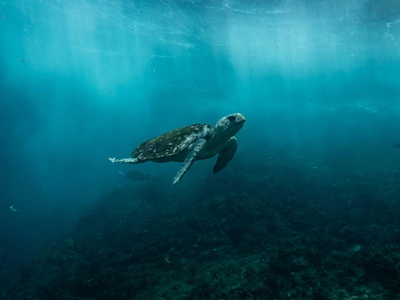
Loggerhead Sea Turtle
This sea turtle nests on sandy beaches along Israel’s coast, facing threats from habitat destruction, fishing bycatch, and marine pollution. Conservationists protect nests from predators and human disturbance, and work to reduce light pollution near key nesting sites.
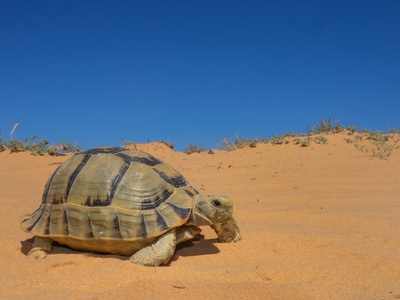
Negev Tortoise
Also known as Kleinmann’s Tortoise, this is one of the smallest tortoises in the world. Its population has been decimated by illegal pet trade and habitat destruction. Protected areas in the Negev are critical for the survival of the remaining wild individuals.

Hula Painted Frog
Once thought extinct for over 50 years, this “living fossil” was rediscovered in 2011. Its only known habitat is the Hula Nature Reserve, where conservation focuses on restoring wetlands and monitoring this unique and extremely localized amphibian population.
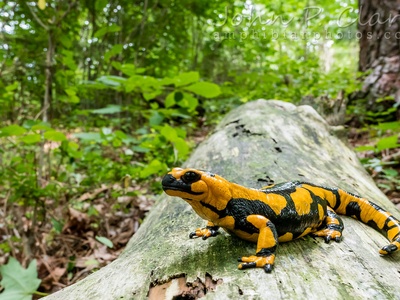
Fire Salamander
This stunning black-and-yellow amphibian depends on clean, unpolluted winter pools for breeding. Its populations are declining due to habitat loss, water pollution from agriculture, and the drying of breeding sites, making it a key indicator of ecosystem health.

Yarkon Bream
An endemic fish found only in Israel’s coastal rivers, it was nearly wiped out by pollution and habitat degradation. A captive breeding program and successful reintroduction into the restored Yarkon River serve as a major conservation success story for freshwater ecosystems.

Gilboa Iris
This spectacular dark purple iris is the symbol of the Society for the Protection of Nature in Israel. Endemic to Mount Gilboa, its small population is threatened by habitat degradation and illegal picking. Strict protection within nature reserves is key to its survival.

Sharon Iris
Endemic to the coastal plain’s sandy soils, this striking iris has lost over 90% of its habitat to urban development and agriculture. Remaining populations are small and fragmented, surviving in protected reserves like the Iris Reserve in Netanya.
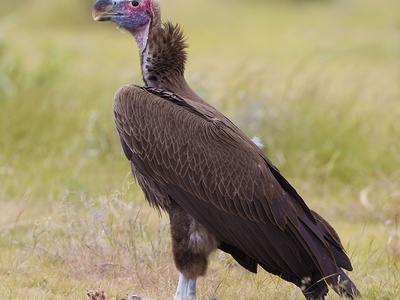
Lappet-faced Vulture
Israel’s largest bird of prey, it is on the verge of extinction as a breeding species in the country due to poisoning and habitat loss. The “Under a Vulture’s Wing” project provides safe feeding stations and monitors the few remaining pairs.
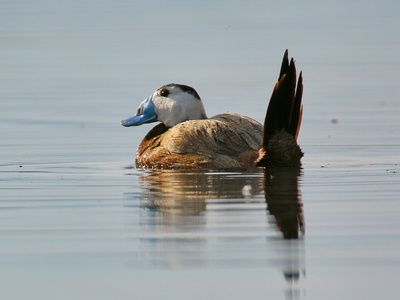
White-headed Duck
A rare wintering visitor to Israel, this stiff-tailed duck relies on specific wetland habitats that are under threat from drainage and pollution. Conservation of remaining reservoirs and natural pools is essential for providing safe wintering grounds for this globally threatened species.
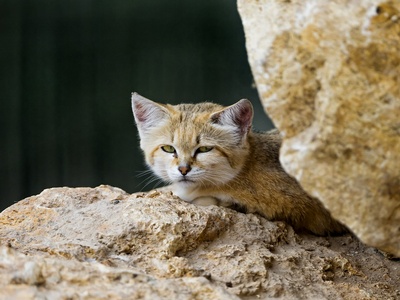
Sand Cat
This small, elusive desert cat is perfectly adapted to arid environments but is threatened by habitat degradation and prey loss. Its nocturnal nature and remote habitat make it difficult to study, but conservation efforts focus on protecting the sand dunes it calls home.

Marbled Teal
This dabbling duck requires specific shallow wetland habitats with rich vegetation. Drainage of wetlands for agriculture has caused a steep decline in its population. Restoring and maintaining suitable wetland habitats is the primary conservation strategy for this rare duck in Israel.
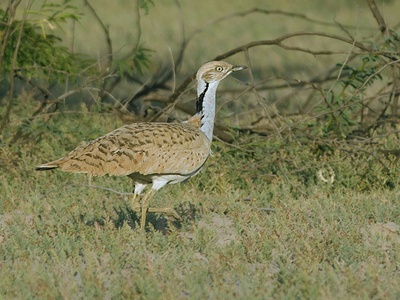
Macqueen’s Bustard
This ground-dwelling bird has suffered from habitat loss due to agriculture and military training zones, as well as poaching. Its stunning courtship display is now a rare sight. Conservation focuses on habitat protection and minimizing human disturbance in its desert breeding areas.

Egyptian Vulture
Known as the “Pharaoh’s Chicken,” this intelligent vulture uses tools to break open eggs. It faces severe threats from poisoning, electrocution on power lines, and habitat loss. A captive breeding and release program aims to bolster its dwindling wild population.
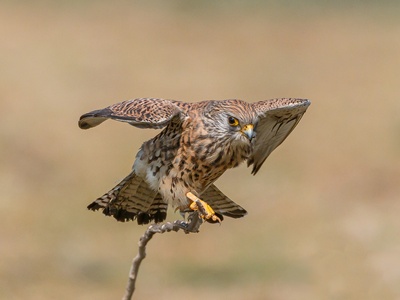
Lesser Kestrel
This small falcon breeds in colonies, often in old buildings. It has declined due to the intensification of agriculture, which reduces its insect prey, and the renovation of old buildings that destroys nesting sites. Providing artificial nest boxes has proven successful.

Syrian Spadefoot Toad
This secretive amphibian spends most of its life buried underground, emerging to breed in temporary winter rain pools. The drainage of these pools for development and agriculture has led to a severe decline, leaving only a few isolated breeding populations.
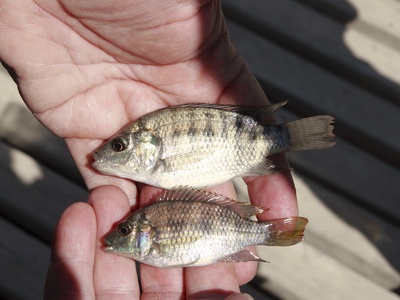
Jordan Tilapia
A native St. Peter’s fish, its population in the Sea of Galilee has declined dramatically due to overfishing, competition with invasive species, and fluctuations in water levels. Stricter fishing regulations and habitat management are needed for its recovery.

Damascus Loach
This small, bottom-dwelling fish is highly sensitive to water quality and flow. Its populations are threatened by pollution, dam construction, and water extraction that alters its riverine habitat. It serves as an indicator species for the health of northern Israel’s freshwater ecosystems.

Negev Iris
Endemic to the sandy regions of the western Negev and northern Sinai, this beautiful iris is threatened by overgrazing, agricultural development, and military activities. Its survival depends on the protection of its specific sandy soil habitat within designated nature reserves.

Persian Fallow Deer
Extinct in the wild in Israel, this deer was reintroduced from captive stock. Small, self-sustaining wild populations now exist in the Galilee and Mount Carmel. The main threats are poaching and road accidents. It is a flagship species for reintroduction programs.

Great White Pelican
While globally common, the massive flocks that winter in Israel face threats from entanglement in fishing gear and disease outbreaks like avian flu. Farmers sometimes clash with the birds over fish stocks, prompting management programs to provide alternative food sources.
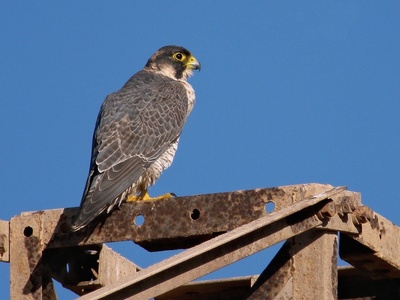
Barbary Falcon
This swift cliff-nesting falcon is the desert counterpart of the Peregrine Falcon. Its tiny Israeli population is at extreme risk from nest robbing for falconry, human disturbance at nesting sites, and poisoning. Protecting its remote nesting cliffs is paramount.
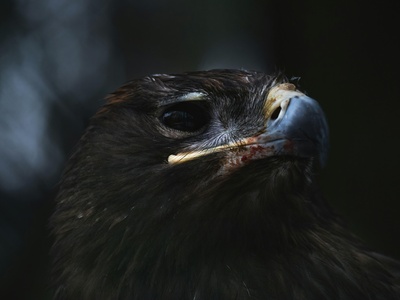
Steppe Eagle
This large eagle passes through Israel during migration, with some wintering in the country. It is globally endangered due to habitat loss in its breeding grounds, agricultural intensification, and poisoning. Protecting stopover sites in Israel is crucial for its migratory journey.

Dalmatian Pelican
Rarer in Israel than the Great White Pelican, this massive bird is a scarce winter visitor. It faces threats from habitat loss of undisturbed wetlands and collision with power lines. Conservation of large water bodies is key for its wintering survival.
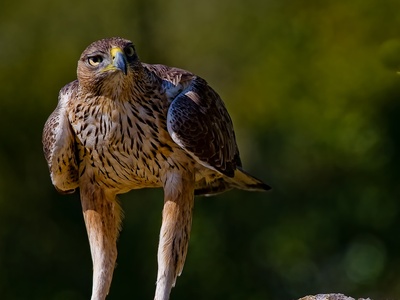
Bonelli’s Eagle
A powerful eagle of rocky landscapes, its Israeli population has declined due to electrocution on power poles, habitat loss, and decreasing prey availability. Insulating power lines in its territory and protecting nesting sites are key conservation actions.
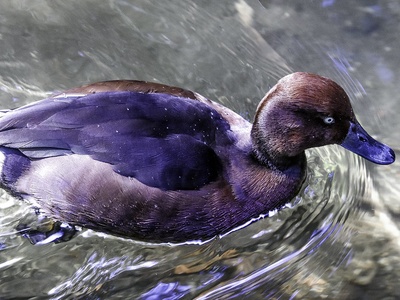
Ferruginous Duck
A rare breeding duck in Israel, this species requires wetlands with abundant vegetation for nesting. Its population is threatened by the drainage of swamps and marshes for agriculture. The restoration of wetland habitats, like in the Hula Valley, is vital.
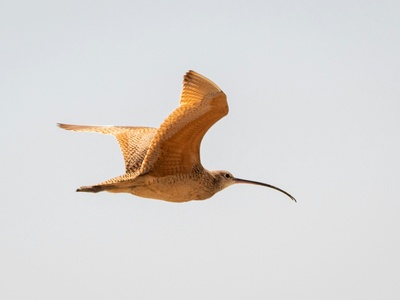
Long-billed Curlew
An extremely rare vagrant, but listed as EN nationally. This shorebird is threatened by habitat loss on its breeding grounds in North America. Its presence highlights the global importance of Israeli stopover sites for migratory birds, even for very rare visitors.
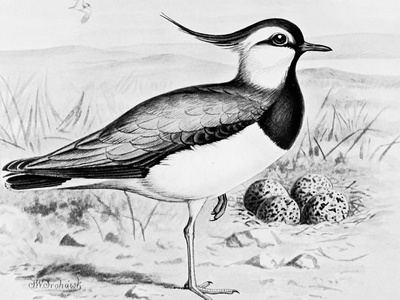
Sociable Lapwing
A critically endangered species globally, small flocks are sometimes seen in Israel during migration or winter. Its catastrophic decline is due to habitat conversion on its Central Asian breeding grounds. Protecting its agricultural and steppe stopover habitats in the Negev is important.
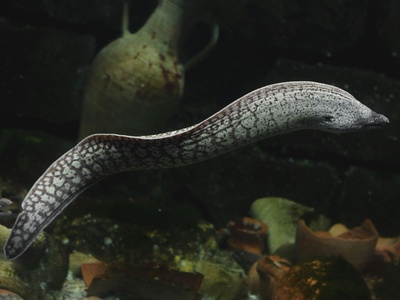
European Eel
This mysterious fish begins life in the Sargasso Sea and migrates to Israeli rivers to mature. Its population has collapsed due to overfishing, dams blocking migration routes, and pollution. Restoring river connectivity is crucial for its survival.
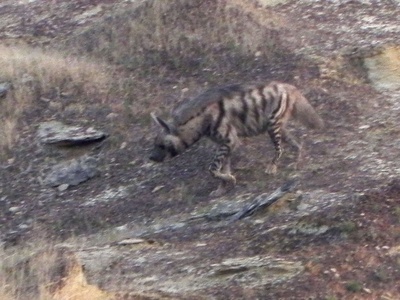
Striped Hyena
Despite its adaptability, the hyena is threatened by road accidents, persecution due to its negative reputation, and poisoning. It plays a vital role as a scavenger. Public awareness campaigns aim to foster coexistence and reduce human-wildlife conflict.

Egyptian Mastigure
Also known as the Dhab lizard, this large herbivorous reptile is threatened by habitat destruction for agriculture and illegal collection for the pet trade. Protecting the arid, rocky areas where it digs its deep burrows is essential for its survival in the Arava.

Beer Sheva Fringe-fingered Lizard
Endemic to the loess plains of the northern Negev, this lizard has lost over 90% of its habitat to agriculture and development. It is a flagship species for the conservation of Israel’s unique loess ecosystems, with efforts focused on protecting remaining habitat patches.
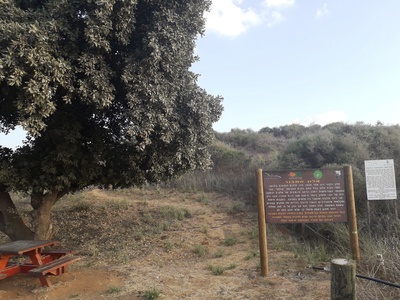
Tabor Oak
While the species is widespread, the specific ecotype of the Sharon Plain is critically endangered. Once forming vast forests, only scattered groves remain due to clearing for agriculture and urban development. Protecting these ancient trees and their unique ecosystem is a priority.

Hairy Vetchling
This flowering plant of open habitats has become rare due to the intensification of agriculture and use of herbicides. Its decline signals the loss of traditional, low-intensity agricultural landscapes that once supported high biodiversity. Conservation efforts focus on preserving wildflower-rich grasslands.
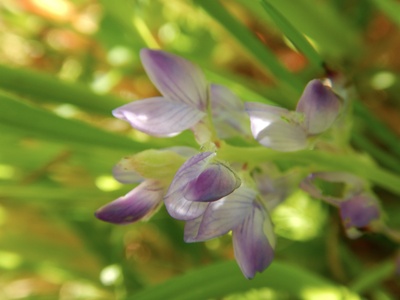
Narrow-leaved Lupin
Known for its beautiful blue flowers, this wild lupin has declined sharply due to habitat loss from coastal development and conversion of fallow fields to intensive agriculture. It is an important nitrogen-fixing plant that enriches the soil in its native habitat.

Egyptian Sea-lavender
This salt-tolerant plant is restricted to saline springs and oases in the desert. Its existence is threatened by the diversion of fresh water and the lowering of the water table, which increases salinity beyond its tolerance. It is an indicator of oasis health.
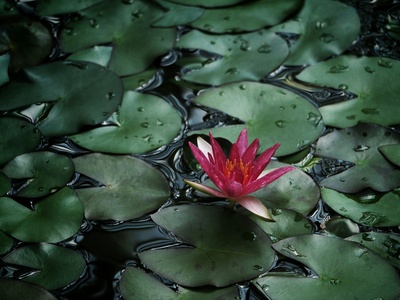
Hula Water Lily
An endemic water lily known only from the Hula Valley, it was thought to be extinct after the drainage of Lake Hula. It was rediscovered in a small pond and is now being cultivated and reintroduced as part of the Hula restoration project.
